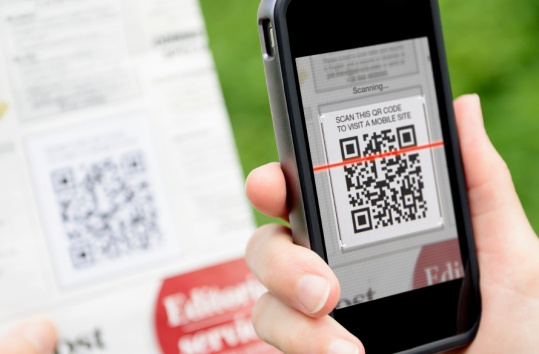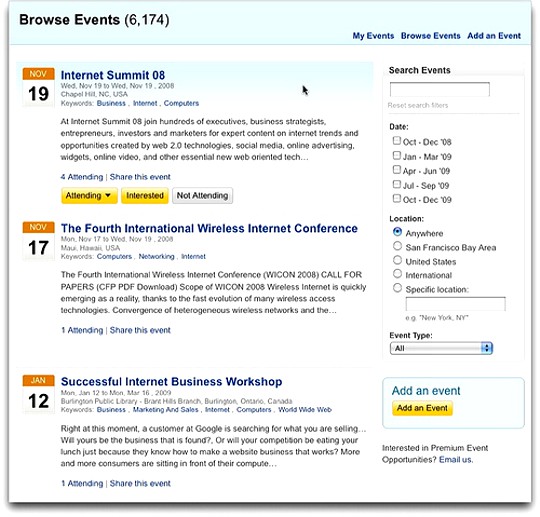
Sometimes, when I think back to internet trends that came and went, it can put a big smile across my face. Remember the hours you or your friends spent playing Farmville and typing all Facebook statuses in the third person? Sweet memories, right?
But then there are the trends that have kind of faded into the background, only to pop up in your thoughts when you're in the shower or in the middle of devising a new marketing campaign. You think, "Does anyone actually do that anymore?" Googling it doesn't really help -- all the articles are from five years ago, and they all seem to think that trend is all the rage. There's nothing explicitly telling you that this trend is really not that cool anymore.
Well, we figured we'd help you set the record straight. Let's take a moment to look back at six internet marketing trends of the last five years that are really not a thing anymore, and give you alternatives to take advantage of now.
1) #FollowFriday
Follow Friday was very, very popular on Twitter back in 2009. Here's how it worked: Every Friday, you'd send a tweet to your followers recommending a Twitter handle you thought was super interesting and others might want to follow. You'd accompany these tweets with the hashtags #FollowFriday or #ff.
Here's what a #FollowFriday tweet was supposed to look like:

It's descriptive, helpful, and personalized. But here's what #FollowFriday tweets actually ended up looking like -- ALL OF THEM:

You can imagine how cluttered your news feed looked when everyone you followed was posting tweets like that at the same time. (Oatmeal said it best.)
Follow Friday started with a single tweet by entrepreneur Micah Baldwin.
One of his followers responded by suggesting the #followfriday hashtag. A few more friends hopped on board, and boom: At the peak of the first ever Follow Friday, the #FollowFriday hashtag saw two tweets per second.
Why did it catch on so fast? Because it was easy, people felt like they were spreading goodwill, and anyone with a free Twitter account could participate. There were great intentions behind its creation and adoption in 2009. If you think someone's tweets are great, why not share that greatness with your followers? But when Twitter feeds became incomprehensible streams of hashtags and Twitter handle recommendations, Follow Friday got old reeeal quick.
It's not clear when Follow Friday started dying, but it's gone.
2) Like-Gating
Have you ever been offered something for free from a brand in exchange for "Liking" their Facebook page? That's called Like-gating, a trend that got really hot in 2011. Here's an example of Like-gating from Sephora:

If you've ever Liked a company's Facebook page so you could get free stuff, think back to how that exchange made you feel about the brand. Did their offer make you feel more loyal to them, or did you suspect they'd spam you in the future?
Most of you would probably say the latter. Offering free stuff for Liking your page is a plea for quantity, not quality, of Facebook Likes. But don't you want the people who Like you on Facebook to have done so without dangling a carrot on a stick? Plus, consumers have been able to "unlike" a company page with the click of a button since 2010.
If your goal is to gain a lot Facebook Likes in a short amount of time, like-gating can be a tempting short-term solution. But ask yourself the business value of all those low-quality Facebook Likes. Is it worth the investment?
For Like-gating to be effective at all, the real work would need to start after a consumer Likes your page. You'd need to convince them to stick around by being helpful, valuable, and providing great content. If you really want more Facebook fans, then you need to make sure you follow up and continue building a strong relationship with consumers long after the Like.
But it's far better in the long term to earn those Facebook likes by providing helpful, engaging content from your website. Before people Like your page, they've probably given it a once-over to see if anything there would interest them. So when people end up Liking your page by choice, they're more likely to want to engage with your website content -- which is your ultimate goal, anyway.
3) LinkedIn Events
The idea behind the LinkedIn Events application, which was shut down in 2012, makes total sense: Professionals want to know where other professionals are networking and what conferences they're going to. Plus, you wouldn't want professional events muddled in with your best friend's housewarming party on Facebook Events -- and at that point, how many of you were connected on Facebook with all of your professional mentors and influencers, anyway?
LinkedIn's Events application let users browse events the people in their networks were organizing or attending. You could see the attendee lists, mark down whether you were attending yourself, and even see a list of "attendees you may want to meet" based on connections, interests, and industry. Here's what it looked like:

When LinkedIn announced they would be shutting down the application, my first reaction was, "LinkedIn had an events application?" Apparently I wasn't alone. LinkedIn's official message said they shut it down because they wanted to invest more time and money in building out other parts of the product. It's unclear whether this meant that too many LinkedIn users didn't use the Events application, or it just didn't support LinkedIn's overall strategy.
Either way, if you're feeling lost without it, try finding and promoting events on Facebook, Eventbrite, or on MeetUp.com. (The first is much more acceptable than it used to be.)
4) QR Codes
Remember when it seemed like QR Codes were everywhere? They were on store windows, napkin holders, walls, in magazines. In short, QR Codes (Quick Response codes) are matrix barcodes that can be read by QR barcode readers, which people could choose to install on their smartphones. Marketers thought of them as a way to bridge offline and online marketing -- kind of like links you could "click on" in real life.
But there was just one problem: The trend never really broke out of the tech-savvy crowd. Although both Apple and Android have QR readers built in to their systems (Apple's is built into Passbook, not the camera itself), that isn't very widely known.
If you're looking for a way to connect the physical and digital world, it's simple: Place URLs in places you want consumers to see them. They can type them in manually. Just make sure the URL is logical to type -- not a random jumble of letters.
5) EdgeRank
Facebook's News Feed algorithm has kept marketers on their toes by evolving numerous times since it launched in September 2006. In 2006, users first saw personalized lists of their friends' posts that updated throughout the day. To figure out what content users wanted to see on their news feeds, Facebook used a pretty unsophisticated algorithm: the pre-cursor to EdgeRank.
In 2007, at the same time Facebook launched Ads and Pages for companies to use, they released a new News Feed algorithm, named "EdgeRank," that determined exactly which Facebook posts would go into other people's News Feeds. For companies, EdgeRank provided statistics of the engagement on your company page so you could analyze your activities.
But the EdgeRank algorithm couldn't keep up with the rapidly increasing number of people using Facebook, now more than a billion people per month, accessing Facebook on all different devices. In August 2013, Facebook announced changes to the algorithm that could accommodate its huge user base.
Since then, the name EdgeRank has been declared dead, but Facebook's algorithm has continued to evolve and improve. The new algorithm has almost 100,000 weight factors to determine which of your friends' posts you see on your feed. With all of these changes that've cropped up, your survival strategy should be simple: continue creating content your fans, leads, and customers enjoy.
6) Facebook Polls
In June 2013, Facebook announced a plan to streamline the number of ad units by cutting out redundancies they found in their advertising platform. This would include the Questions product for Pages (sometimes referred to as "Facebook Polls"), which many marketers used to engage fans in a way other than just posting to their page's wall.
But it turns out that Facebook Questions, originally predicted to be a big threat to Quora, actually never really caught on. Facebook even repackaged and relaunched a more social, watered-down version of the product in 2011 that allowed you to only poll people you were directly connected to on Facebook, rather than the whole Facebook community.
Questions was quietly shut down in July 2013 under the premise that marketers could get the same information from fans by simply asking a question in new post and looking at the comments. LinkedIn also used to have a Group Polling feature, but they too shut it down in May 2014.
At this point, if you want to poll your audience on social media, you'll have to stick with asking questions in regular posts and looking at answers in the comments. And even that tactic is kind of outdated -- Facebook's made some algorithm changes to cut down on "engagementbait" in the News Feed, and that tactic could end up easily falling into that category. So you should probably steer clear of Facebook polling altogether, unless you're posting a link to a survey or poll you're running on your website.
Do you or did you follow any of these trends? What did you find good and bad about them? Post a comment.
Source: Hubspot / Written By: Lisa Toner


